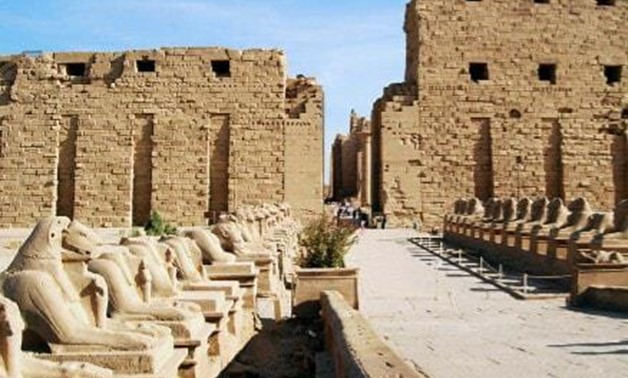
File- Karnak Temple
CAIRO –4 January 2019: Chair of the Arab Regional Center for World Heritage, Shaikha Mai bint Mohammad Al Khalifa, has condemned the transfer of the four sphinxes from Luxor’s Karnak Temple will be placed in Tahrir Square.
Al Khalifa sent an official statement to the Egyptian Ministry of Antiquities stating that any changes to a site of this importance must be preceded by consulting the UNESCO World Heritage Center, and prresenting reports that evaluate the impact on the site itself, and other issues stipulated in the operational guidelines of the World Heritage Convention.”
Al Khalifa suggested that experts from the Center and Egypt have to meet and find an alternative solution to this decision.
On December 27, Head of Karnak Antiquities Mostafa el Sagheer announced that four sphinxes from Luxor’s Karnak Temple will be placed in Tahrir Square in Cairo alongside an obelisk which was recently moved to Tahrir Square to decorate it.
This obelisk was transferred to Tahrir square from San El-Haggar archaeological site in Zagazig two months ago.
The transferred sphinxes were taken from behind the temple’s first pylon, not from the famous avenue of sphinxes known as Kebbash Road that once connected Karnak and Luxor temples, they are from the first courtyard behind Karnak’s first pylon.
That courtyard contains 30 pairs of sphinxes that once decorated the temple’s second pylon.
During the 22nd, 25th and 30th dynasties, the sphinxes were removed to the temple’s first courtyard, in order to free the second pylon for the construction and installation of the Taharqa column and a group of shrines.
More than 90 percent of Kebbash road has been restored and developed, and will inaugurated soon.
The Pharaonic Kebbash Road is to become the longest gangway and open museum in the world.
The renovation of the Pharaonic Kebbash Road is considered a monumental moment for Luxor, as the project will bring the great road to life again.
Its new design is set to change Luxor’s position on the touristic map, as it will become the longest gangway and open museum in the world.
It is expected that the new makeover of Kebbash Road will attract tourists the world over and play a vital role in pushing the Egyptian tourism forward.
Kebbash Road will be reopened after its renovation.
In Ancient Egypt, Kebbash Road connected the Karnak Temple Complex with the Luxor Temple.
During the time of the Pharaohs, the road was one of the most important, as it hosted ceremonies and festivals.
The road was opened to the public in March 2013 by the Minister of Tourism.
Although Kebbash Road is 2.7 kilometers long, a walk through it is enjoyable as there are around 1,200 statues lining one side of the road, each resembling the Sphinx (where the head is that of a ram and the body is that of a lion) and sculpted from sandstone.
This meaningful decoration is dedicated to Amun, as the head of the statues are in the form of the god’s while the rest of the statue — the body of a lion — is a means of protecting the temples from looters.

Comments
Leave a Comment